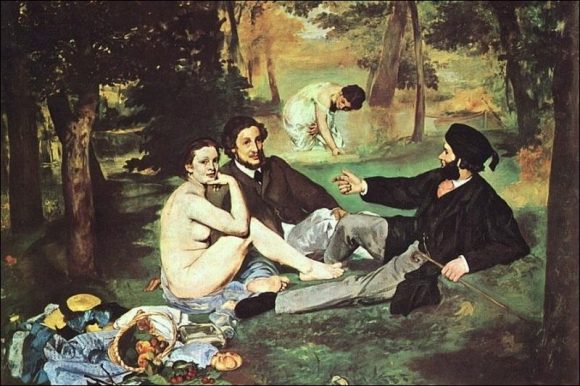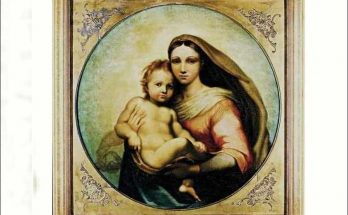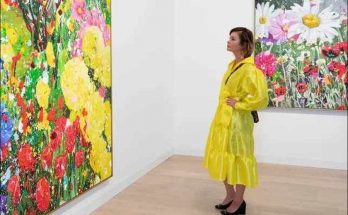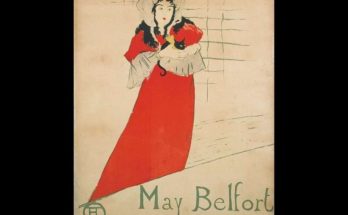The year is 1863… Édouard Manet put a painting on the exhibition called Salon de Paris. Those who came to the exhibition could not understand what was happening. People engaged in academic arts and painters who adhere to the painting traditions laughed, teased and even insulted when they saw the work. When you stepped into the Salon de Paris exhibition at that time, you could understand exactly where Manet’s Luncheon on the Table was in the sound made by the people who disgraced the work.
Many people visiting that exhibition could not realize that this simple composition work would create a deep-rooted revolution in Western art. We can say that it violated all the rules according to the pictures made at that time. From the canvas measurements to the posture of the figures, it seemed that all the rules of academic painting were deliberately violated.
The scene in this picture seemed shameful and funny to people. This work, which is thought to have no meaning for anyone, would someday be one of the most meaningful works of modern art. The “oddities” found in the work that changed the rules of art and pioneered the birth of “art for art” made everyone talk about this picture.
So what innovations and “oddities” did Manet create? First of all, we see four figures in the work. Two of them are women, two of them are men. One of the female figures, placed on the back of the composition, is dressed in a thin dress. The woman close to us is completely naked. In the two male figures, there are the clothes of university students of the period. Of course, there were figures of nude women in Western art before… However, for the first time, we see that not a Goddess is used as a model, which is known by people from the public, whom she sees on the streets and becomes hello.
Victorine Meurent gave life to the figure, which is closer to us here and attracts our attention most in the picture. He is both a model and a painter. We can say that it takes a lot of courage to do these things during his lifetime. Meurent looks towards us and has a very strange expression on his face. It’s like he’s trying to embarrass us. This figure, which never cares about its nudity, is quite natural with its upright gaze and body posture. So Manet did not put sexapality in the foreground, despite painting Victorine naked.
In fact, the painting itself is as natural and bold as the female figure here: While the war scenes or works depicting religious images were made on large canvases at that time, the dimensions of this composition designed by Manet as 2.08 meters by 2.64 meters; You see, this is a pretty big painting.
It is also remarkable to not fully understand the action in the composition: does a picnic begin here? Or is it over? It is very difficult to understand. There is a basket of fruit that no one cares about. No figure makes eye contact with the other. Of course, this is not an ordinary picnic, but we cannot understand exactly what happened here.
How ridiculous the composition was, isn’t it? Even the emperor made his face wrinkled when he saw this work. People were confronted with the work, laughing and shameful. This work, whose name was Bathroom when it was first exhibited, and its subject was quite obscene. However, Manet later changed the name of the work to Luncheon on the Grass Soon the painting was removed from the exhibition due to the reactions it received, but it had a huge impact especially on young artists.
The courage of Manet was inspired by other brave and young artists and the number of people who wanted to see the work started to increase. Upon intensive demand, the work went up to the emperor and the “Rejected Exhibition” was opened with his special permission. Compared to the first exhibition, many more people were coming to see Manet’s work.
The courage of Manet was inspired by other brave and young artists, and the number of those who wanted to see the work started to increase. Upon intensive demand, the work went up to the emperor and the “Rejected Exhibition” was opened with his special permission. Compared to the first exhibition, many more people were coming to see Manet’s work.
Facing the entire academy, the painter was inspired by what the academy most respected, namely Renaissance art, while performing his art. There is a similar composition in Tiziano’s Pastoral Konserad. There are two naked idealized female figures alongside two clothed men. It is also evident that Raimundo’s Judgment of Paris was influenced by the three figures to his right from our perspective.
The male figures in Manet’s painting may be students. However, we can say that they are very rich by looking at their clothing styles. A lot of women with them; they are not interested; Probably these women are just prostitutes with very rich men. The comfort of the men and their conversations only between themselves support this. Rich men of the period would sit with their expensive prostitutes naked and have fun this way. This information explains the scene a little more.
However, we see that Manet again touches on a very interesting point here: they are not very similar to the prostitutes accustomed to his painting. In particular, the figure brought to life by Victorene creates the image of a brave, strong, enlightened and free woman. For this reason, the work was found to be immoral and unreasonable for this reason, and was subjected to severe criticism during its making.
Considered as the starting point of modern art, the painting is also remarkable with its innovative style. Realism / Realism is one of the important works in the art of painting and this trend has become more widespread especially with the invention of the camera, and the painters aimed to transfer realistic scenes to their canvases by following Manet. Later, he inspired Cloude Monet, one of the biggest names of Impressionism, namely Impressionism, one of the first movements of modern art, and encouraged him to search for the new one.
This work, which opened the door to many new art movements shaped in the following years, is considered as one of the most important masterpieces in the history of painting with its taboos, young people influenced and the revolution it initiated.
Another review for Luncheon on the Grass.
Visits: 68



